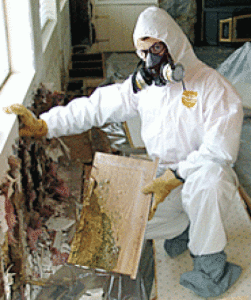 DIY Mold Cleaning VS Professional Cleaning
DIY Mold Cleaning VS Professional Cleaning
If you have water damage in your home or business, it should be considered an urgent problem that has to be dealt with as soon as possible. If water is left in place too long, damage will only get worse and end up costing more to repair.
If you have the type of water damage involving clean water in a small area, you might be able to handle it yourself. However, if the water is in a large area, or is potentially contaminated, that’s when it makes sense to call in a professional.
Whether you do it yourself or not, the goal is to make sure you clean all of the water AND dry all of the remaining moisture, to prevent further damage and mold. Let’s look at some of the steps involved in cleaning water damage.
Safety First
The first thing that must happen before dealing with any area that has been flooded is to make sure the power is turned off to that area. There is no sense in taking any risk with electricity in a flooded area, as the results can be deadly. The next step after ensuring basic safety is to stop the flow of water to the area by shutting off the main valve.
Don’t Skimp on Cleaning Water Damage
Next, assess the degree of damage… is the entire area flooded from wall-to-wall? Is there water beyond reach, such as behind a wall? If there is likely to be moisture that you can’t get to with your own cleaning ability, this is the stage at which you should also call a professional. Also, if the water may be contaminated you may not want to take the risk of cleaning it yourself.
The downside of poor water damage cleaning is that mold will begin to form, often in areas that are not visible, and this can cause massive expense, as well as health risks.
If you are cleaning the water out yourself, aim for 100% dryness before calling the job done, and you may want to use some large fans in the area to make sure the moisture has a chance to completely dissipate. If you are able to get the area dry, you can then assess the extent of the damage to drywall, carpet, flooring, etc, and determine what needs to be removed or restored.
Inspection is Key
Even if you have been able to dry the area yourself, you still may want to call in an expert to inspect for mold, and to deodorize and disinfect the area. Also, don’t take any chances in the event that electrical wiring or devices were touched by the water damage… call in an inspector to make sure your electrical systems are safe so that you can be sure the area is restored to its original use.
Keep these tips in mind when deciding whether to do a water damage cleaning project yourself. When it comes to your property, not to mention your health and safety, it may be worth having a professional involved in the task.
